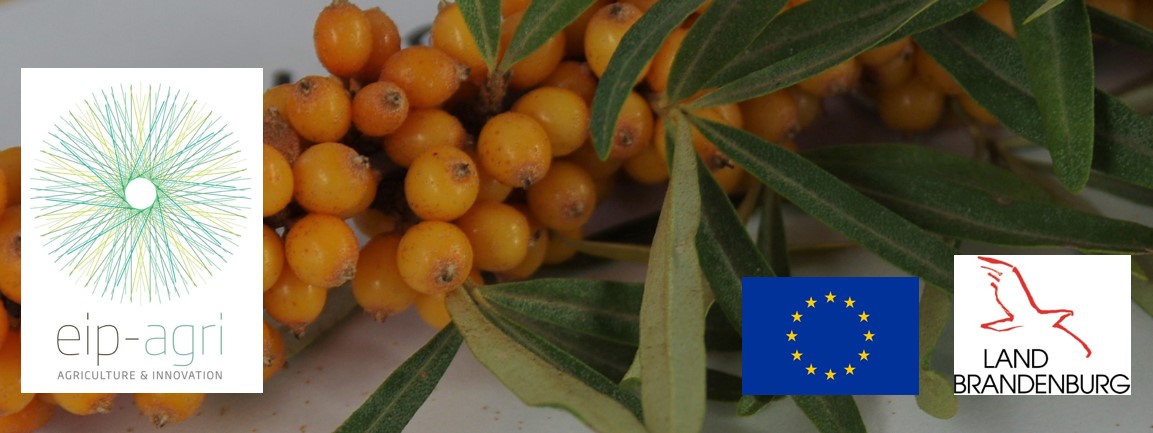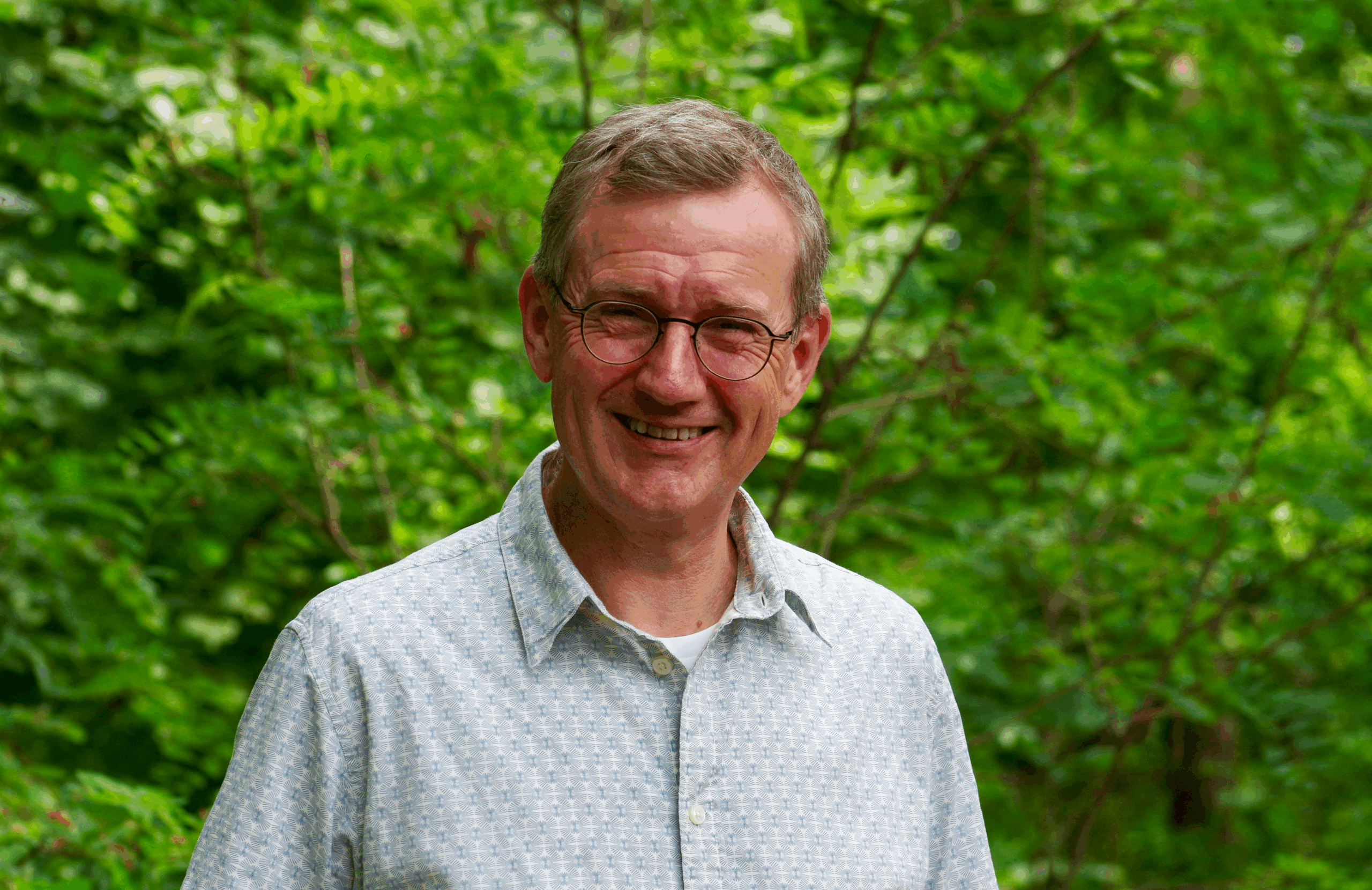The MoPlaSa project is funded by the European Agricultural Fund for Rural Development (EAFRD) as part of the European Innovation Partnership “Agricultural Productivity and Sustainability” (EIP-AGRI).
09.08.2018 – 31.01.2023
- Forst Schneebecke
- Gut Schmerwitz GmbH & Co. KG
- Havelfrucht Werder GmbH
- Leibniz Centre for Agricultural Landscape Research (ZALF) e. V.
- Humboldt University of Berlin
- agrathaer GmbH
- e-nema GmbH
- Internationale Geotextil GmbH (IGG)
- Julius Kühn-Institut (JKI)
- Plant Protection Service Brandenburg of the State Office for Rural Development
- Agriculture and land reorganisation (PSD)
- State Research Centre Mecklenburg-Vorpommern (LFA)
- Sanddornverein e. V. – Society for the promotion of sea buckthorn and wild fruit (SV).
- Leibniz Centre for Agricultural Landscape Research (ZALF) e. V.
What is the aim of the project?
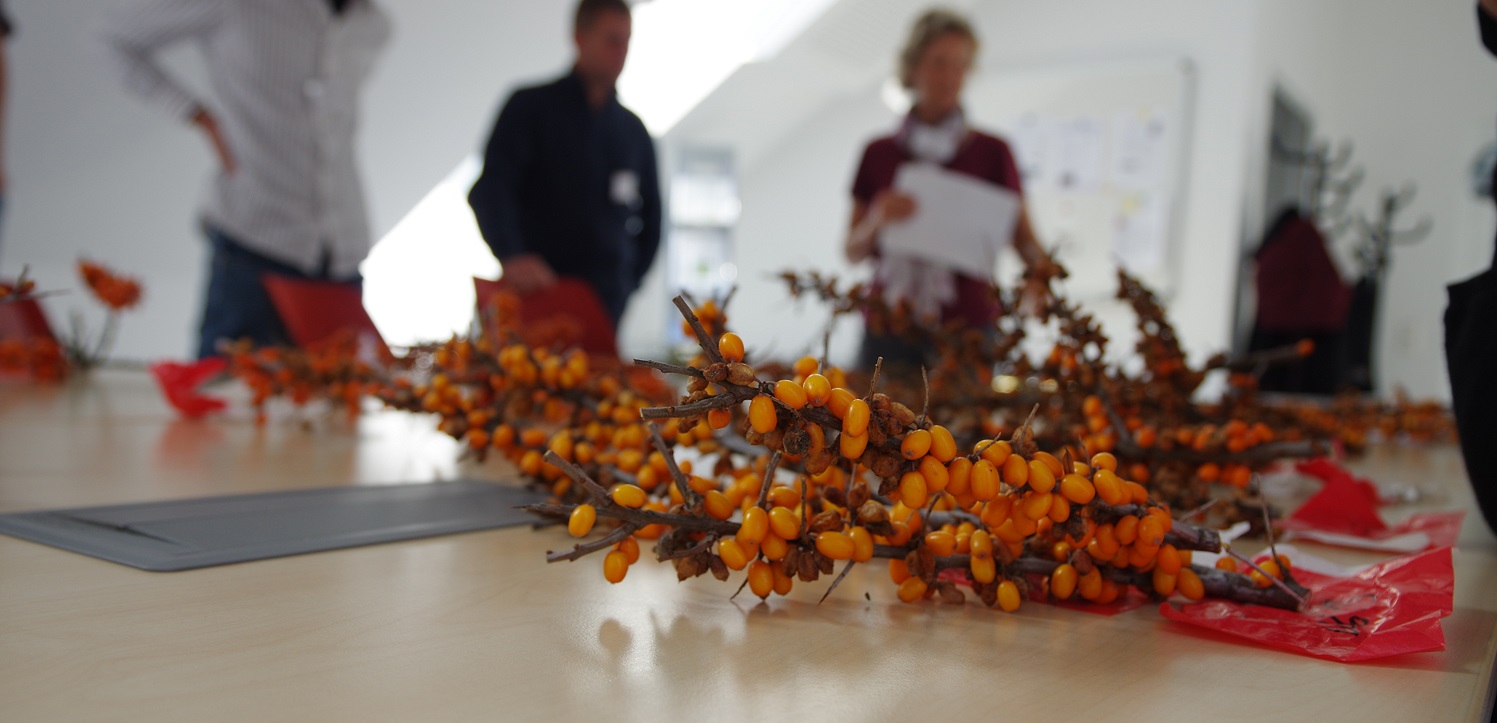
The cultivation of sea buckthorn is threatened by the massive occurrence of the sea buckthorn fruit fly. However, there is a lack of a reliable control strategy that can be implemented in organic and integrated cultivation.
As part of the MoPlaSa project, a modular plant protection strategy is being developed which, by combining the individual modules (e.g. traps, barriers, consideration of variety susceptibility, etc.), enables any form of cultivation. The most promising options are presented in recommendations for action and instructions for implementation in a practical book and short videos.
What does this have to do with the European “Farm to Fork” strategy?
The MoPlaSa project starts at the root of the food sector and focuses on a sub-sector at the basis of sustainable food production. For example, the use of pesticides poses major challenges for integrated production companies and organic farms in particular. Their use is often very limited to certain active substances approved by the EU (in particular biological active substances) or is only possible in exceptional cases. The effectiveness of the agents or their general availability is also often a hurdle. Alternative control strategies and measures are therefore a significant alternative and are being researched and developed to application maturity within the project.
What is agrathaer’s role?
agrathaer carries out the project management for the lead partner and is responsible for the practical preparation of the innovative control concept and public relations work. The focus of the work is on the processing of specific problems that affect practice, the transfer into innovative solutions and the implementation of practical innovation projects.
MoPlaSa BLOG
Poster Presentation
Visit by State Secretary Dr. Schilde
on September 11, 2019
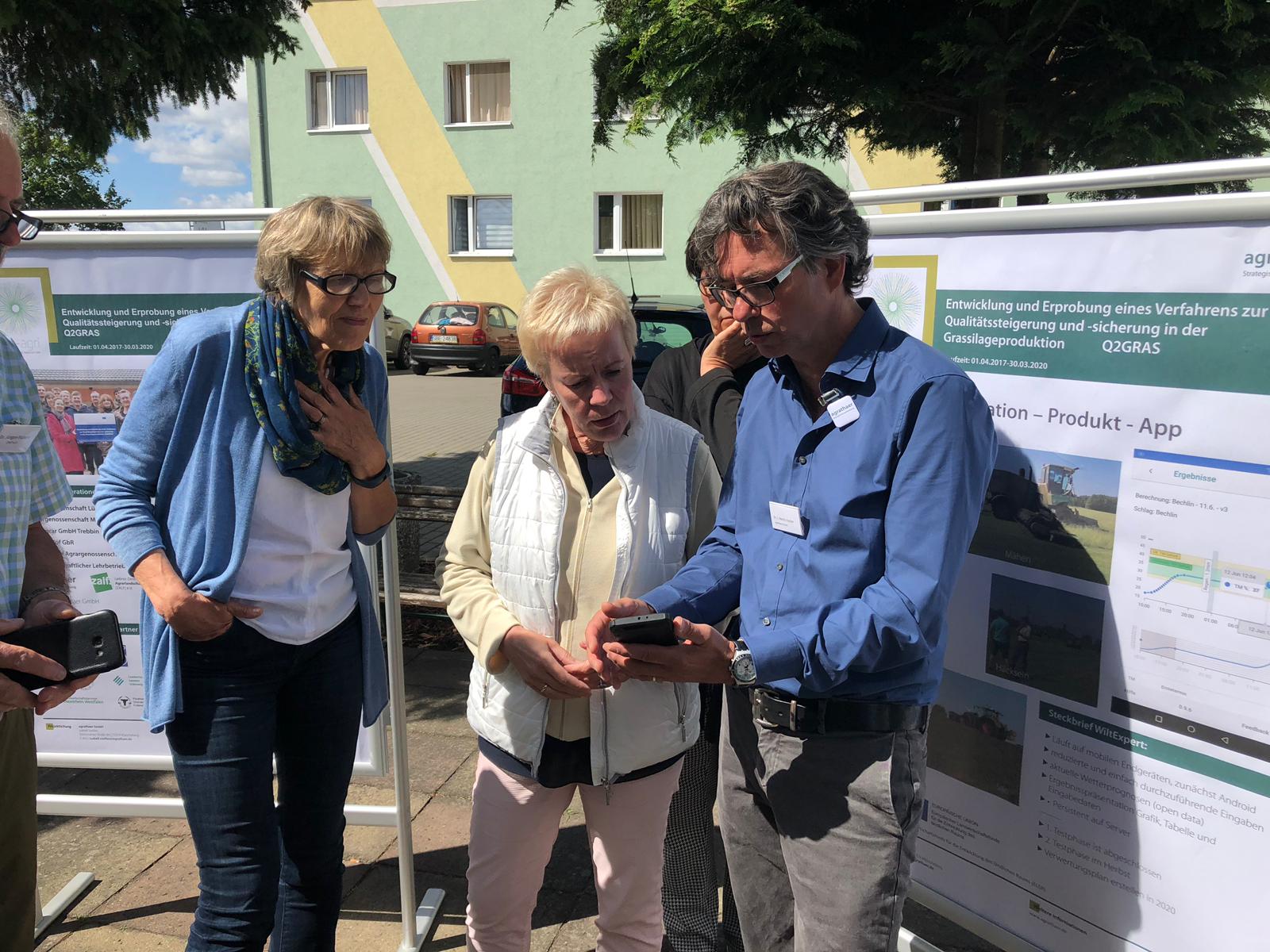
State Secretary Dr. Carolin Schilde visited our MoPlaSa project at ZALF in Müncheberg. Discussions were held on the challenges and future of sea buckthorn cultivation in Brandenburg, highlighting its special significance in northern Germany:
Perennial crops like sea buckthorn provide a permanent habitat for insects, birds, and many other animals, thereby promoting biodiversity and contributing significantly to nature conservation on agricultural land.
Diversity in agricultural cultivation serves as an important safeguard, especially in the face of potentially increasing negative effects of climate change. The high adaptability and variety of sea buckthorn make it a sustainable cultivation alternative.
Sea buckthorn cultivation holds a unique position in northeastern Germany. Tradition and northern German culture should be passed on to future generations, while new knowledge must be generated to ensure the sustainability of sea buckthorn cultivation.
The aromatic fruit, rich in vitamin C, is processed into juice, jam, or liqueur, strengthening regional value creation. Expanding the product range can increase demand and counteract price declines.
To make the visit informative and engaging, we also presented objects from our project practice:
– Sea buckthorn flies, from pupae to flies
– Nematodes under the microscope
– Different sea buckthorn varieties and infestation states
– Fly traps, from single-use sticky boards to reusable traps
Agri-Innovation Summit 2019
June 25-26, 2019 in Lisieux, Normandy – France
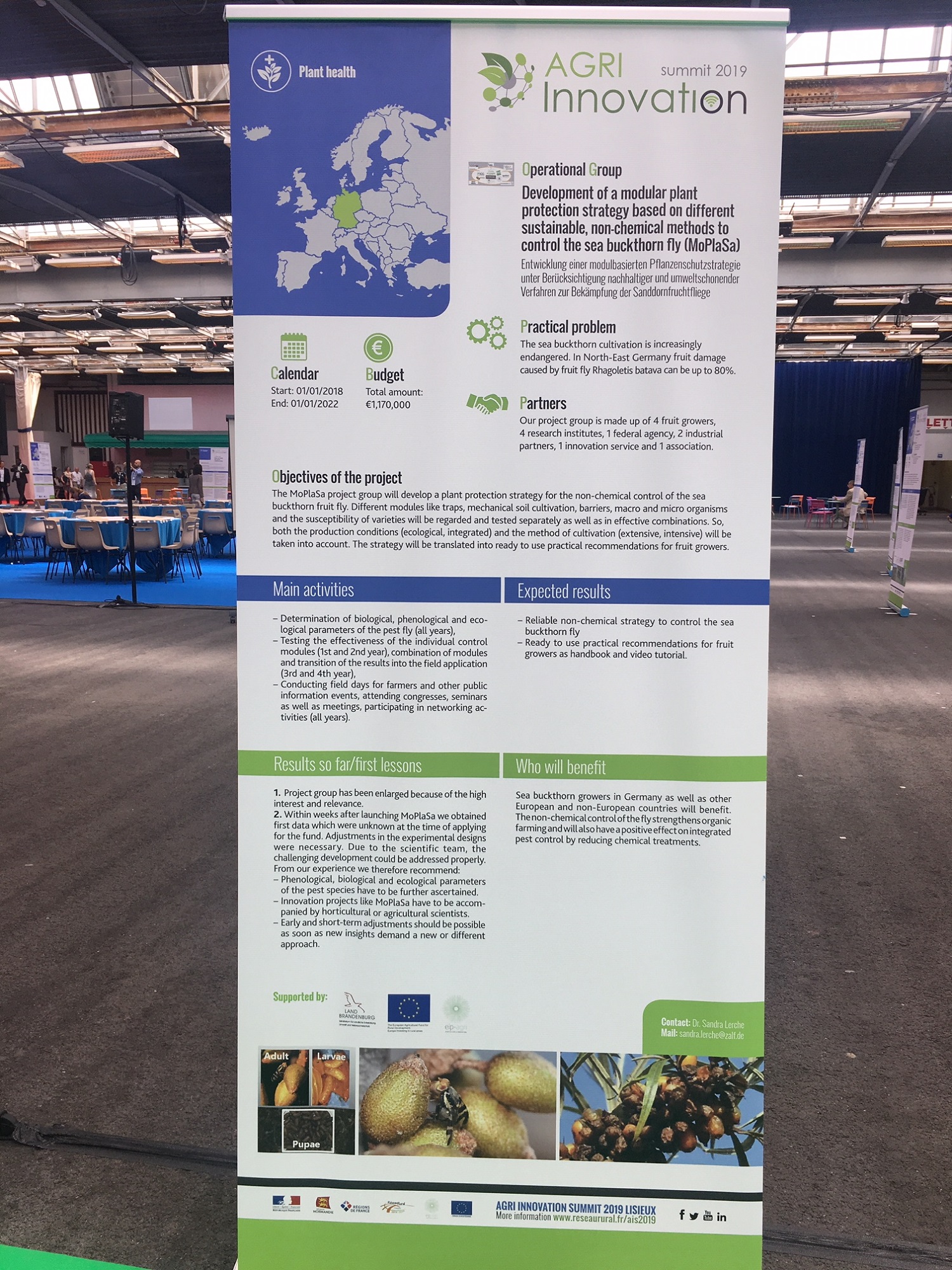
Start of Field Trials
The first insect traps for infestation monitoring were installed in sea buckthorn plantations at Biohof Glindow, Havelfrucht near Werder, and Gut Schmerwitz in Fläming.
June 2019
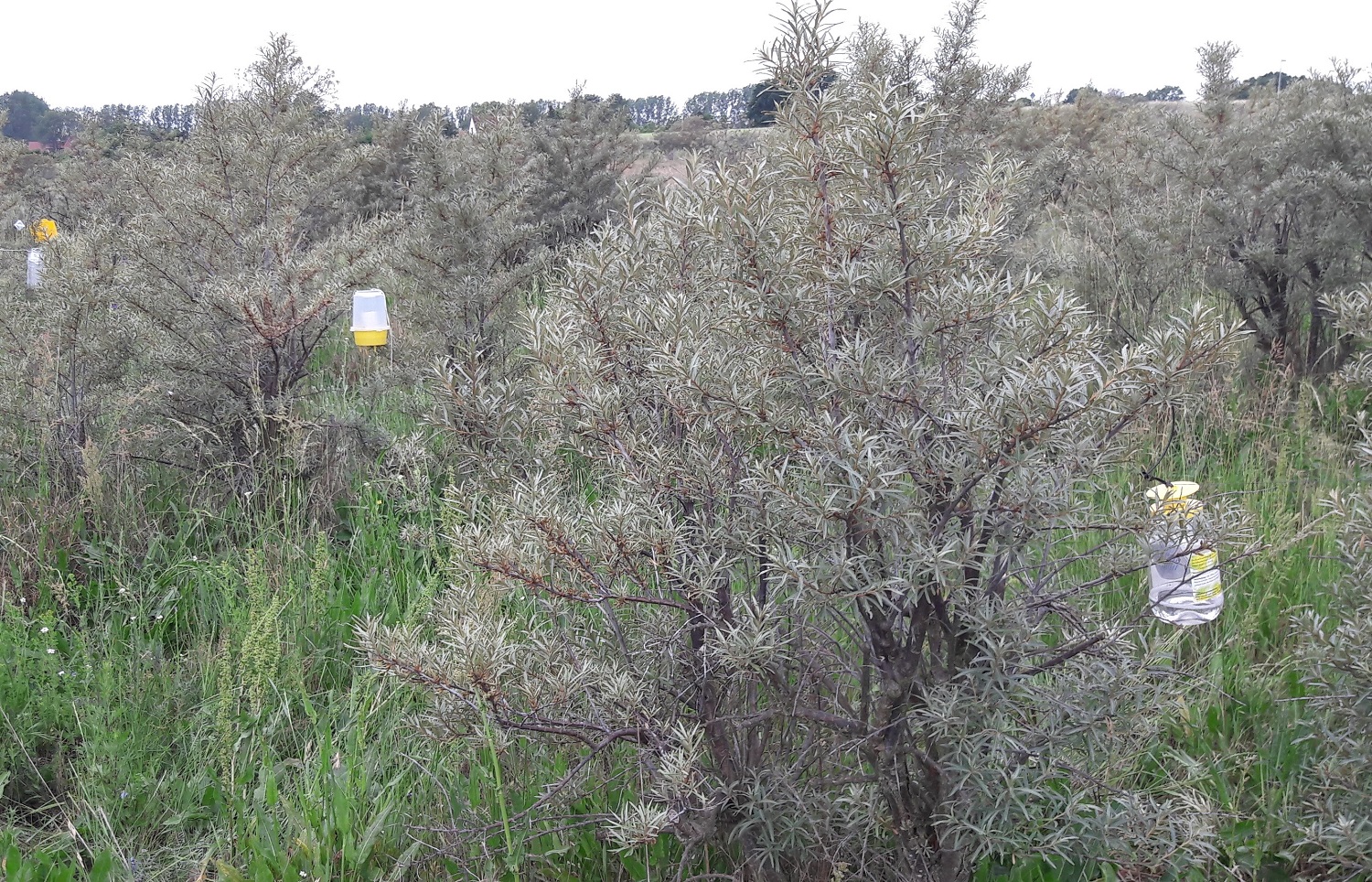
Non-chemical traps are used to collect essential data on the development and occurrence of the flies. The traps are also evaluated for their effectiveness, ease of use, and optimal positioning in the sea buckthorn stands. Key criteria include color, shape, effectiveness duration, and cost. Ecological aspects are also considered; the traps should primarily attract sea buckthorn fruit flies to protect non-target insects. Four types of traps were selected for this purpose. In addition to single-use sticky boards, reusable traps with various designs were used. These traps are bell- or funnel-shaped, contain catch fluid inside, or consist of two sticky panels forming a cross covered with insect glue.
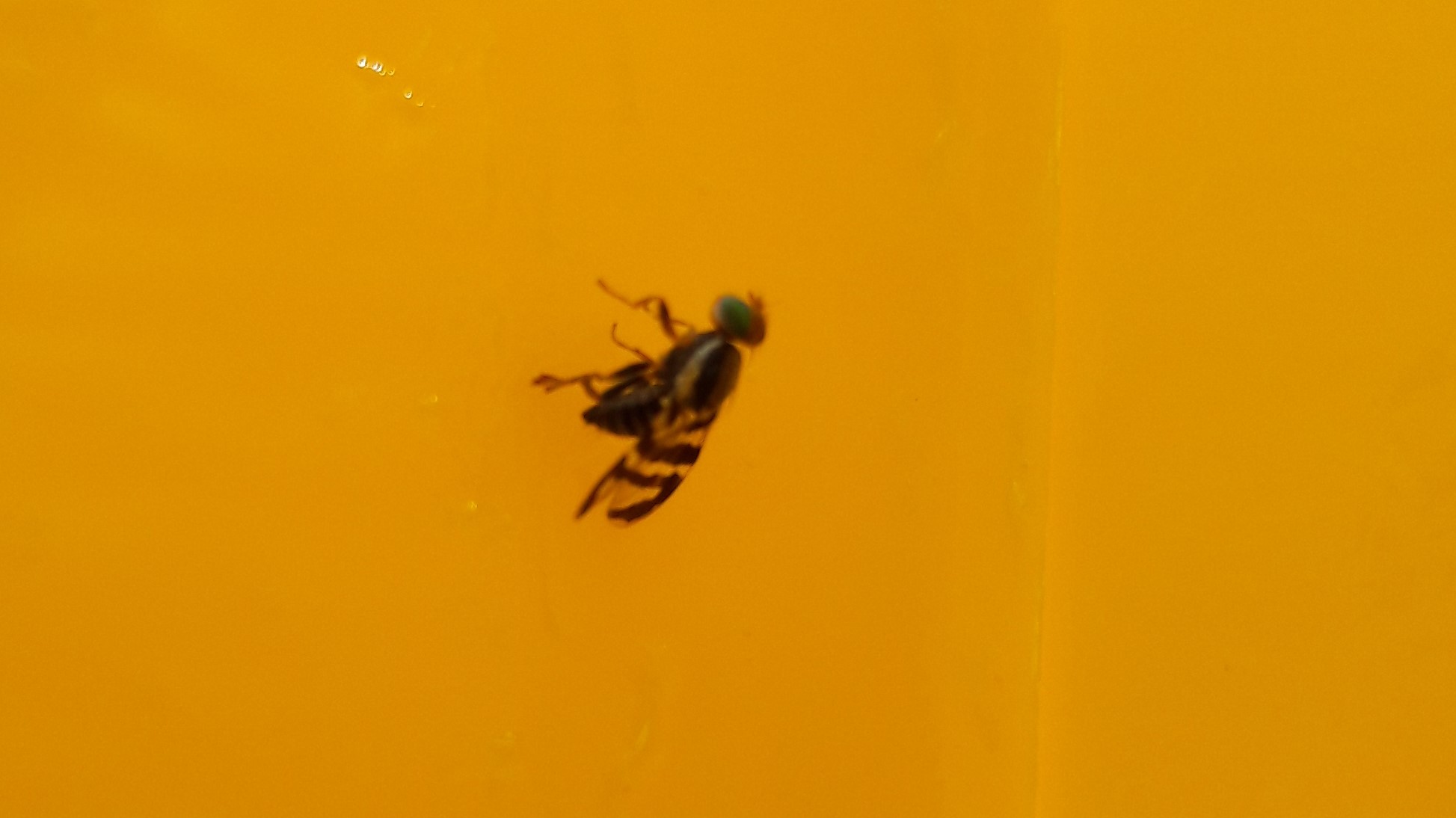
Twice a week, inspections are carried out. The traps are checked and, if necessary, replaced. The catch is documented in recording sheets and evaluated based on specific parameters to ensure valid results.
Wet Seeding Trials for Ground Cover on Test Plots in Dahlem
May 2019, Dahlem
Application of ground cover material using the hydroseeder of project partner IGG.
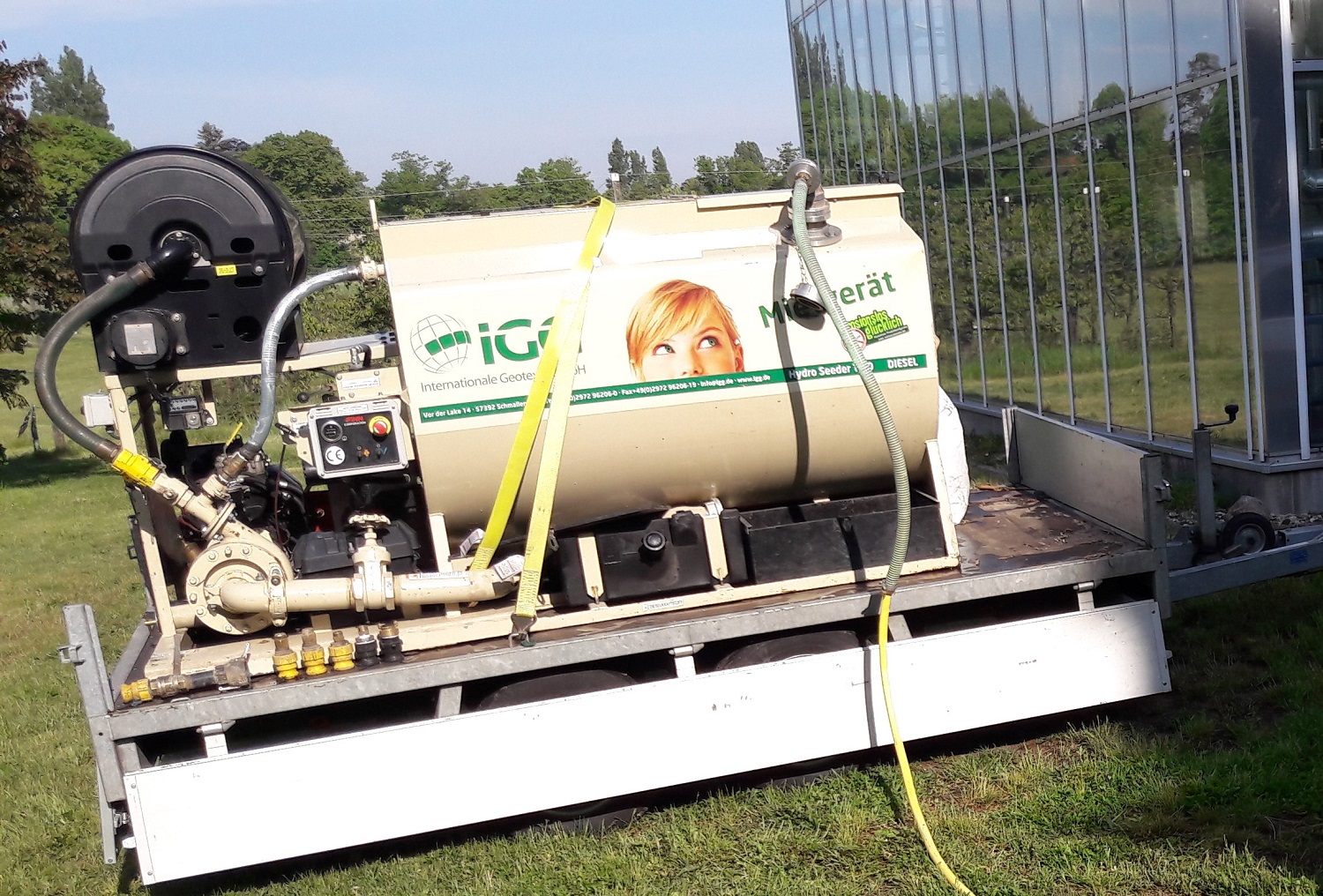
Application of ground cover material using the hydroseeder of project partner IGG.
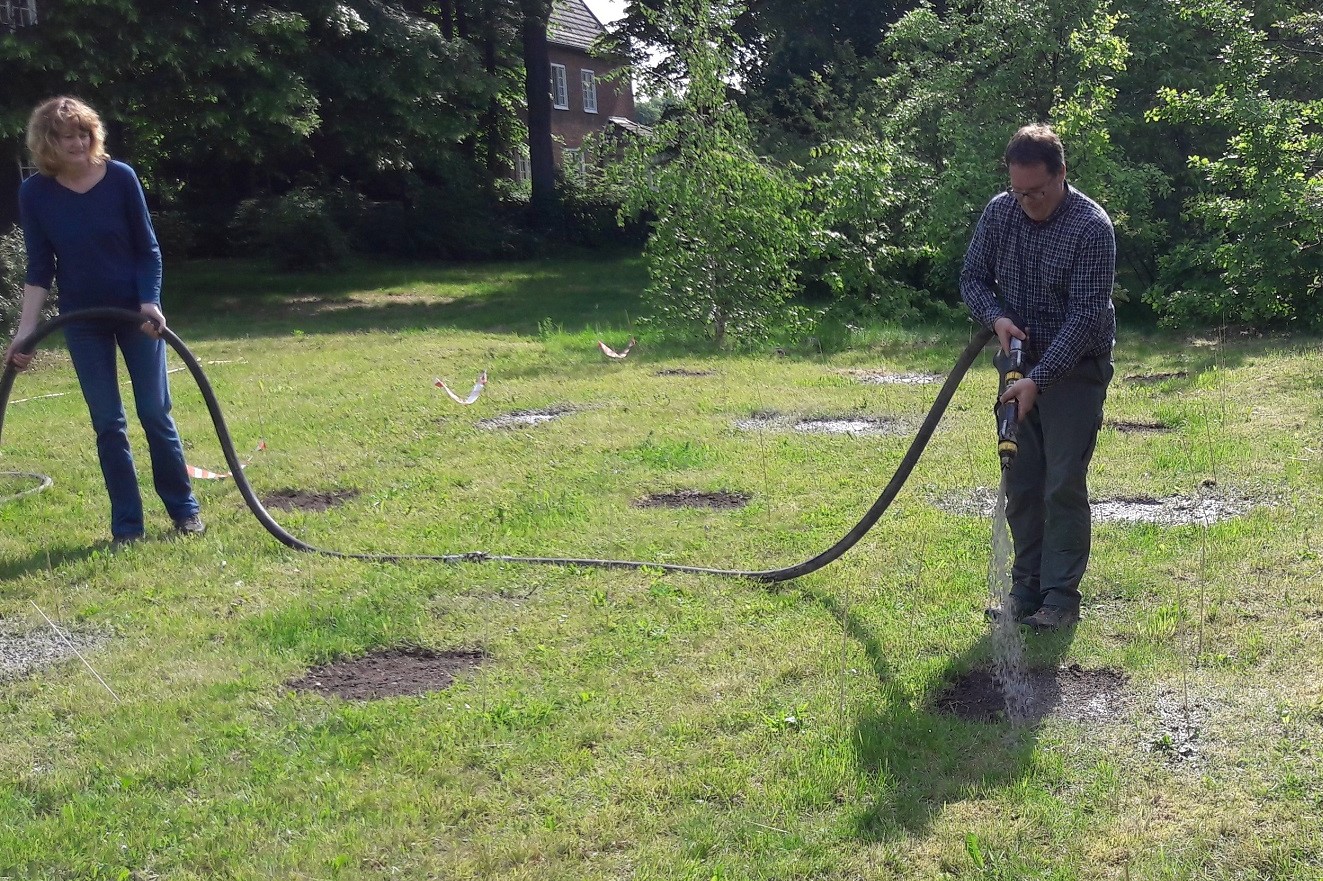
Test plots with ground cover.
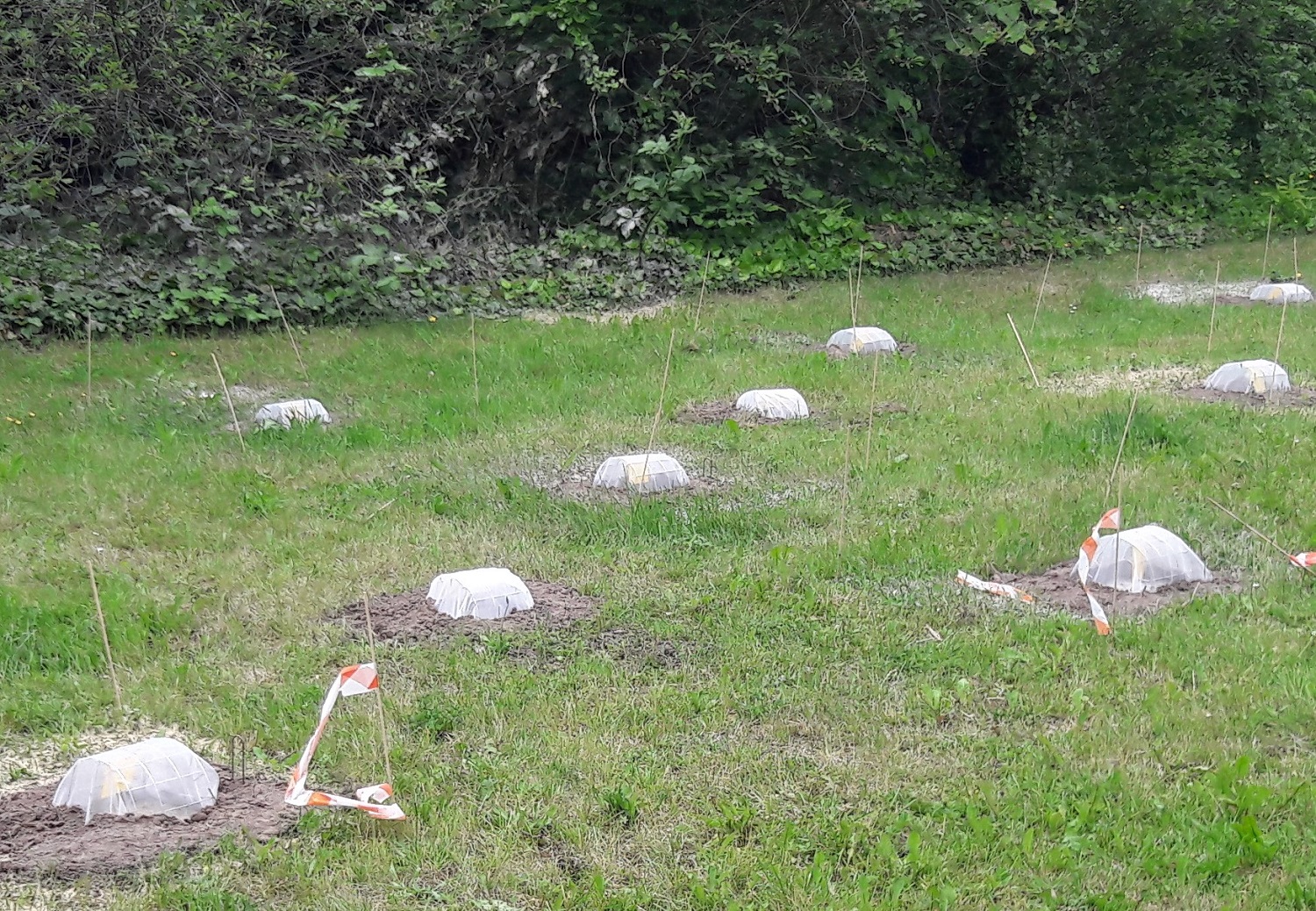
2nd OG Meeting at Gut Schmerwitz
Presentation of Planned Trials for 2019
April 2, 2019
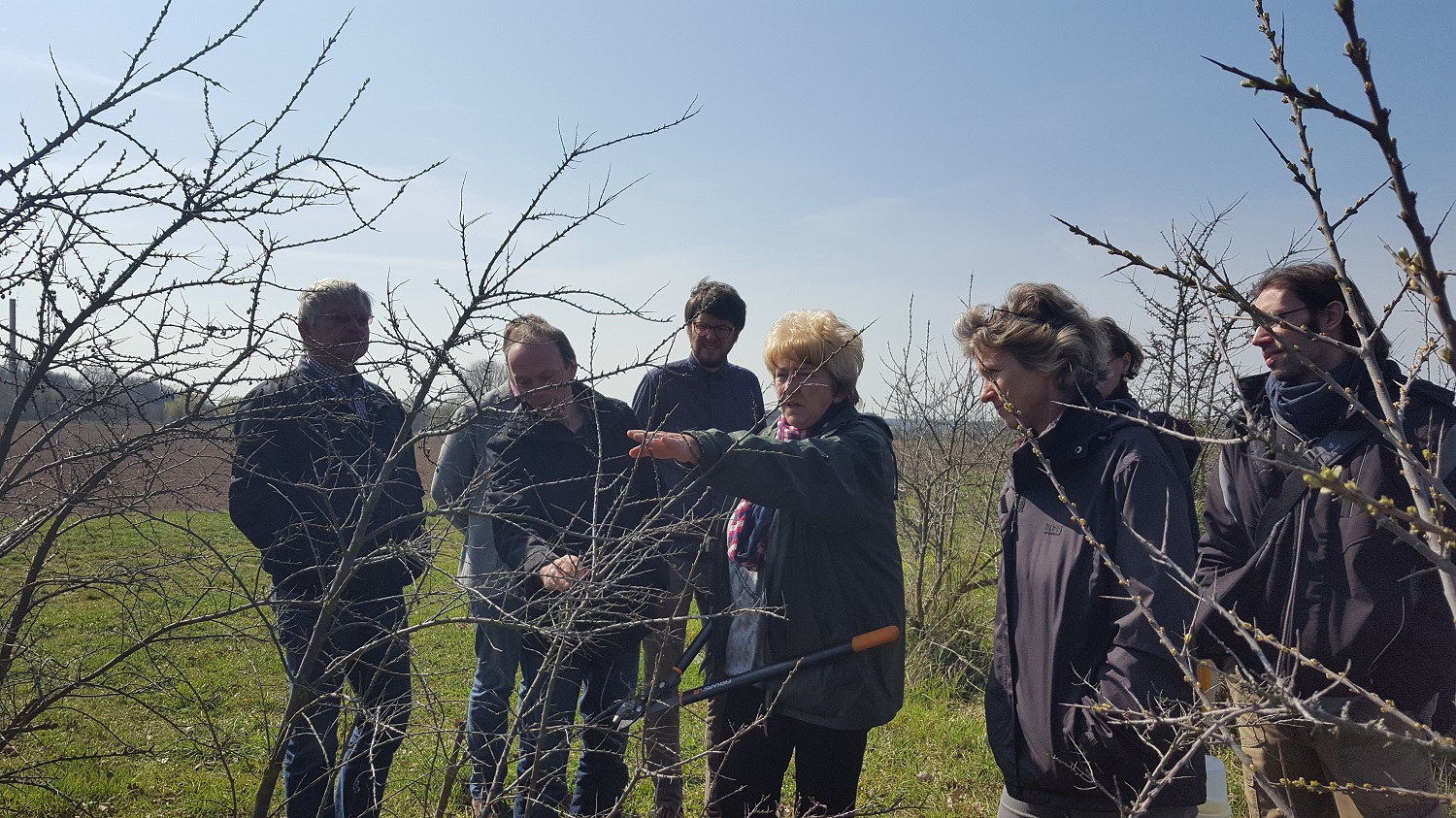
The individual modules for the 2019 trial planning were discussed, emphasizing the importance of closely examining the biology of the sea buckthorn fruit fly. This includes data on overwintering rates, pupa fitness (size), parasitism (color differences), emergence periods (temperature thresholds for development, degree-day models for fly emergence), and determining the base temperature for emergence.
Dr. Bart Vandenbossche (e-nema) presented how nematodes can be used for pest control and the current trials being conducted.
Holger Neisser (IGG) presented plans for the wet seeding trials for ground cover. The ground cover aims to prevent pupae from penetrating the soil and flies from emerging. The trials will address questions about the material (thickness, durability) and application method (size and pressure). A 150 square meter area in Berlin Dahlem (HU Berlin) is available for these trials.
Dr. Sandra Lerche (ZALF) presented the initial plans for the trap trials. In 2019, the following types of traps will be tested: sticky boards (single-/multi-use) and McPhail/tunnel traps for multi-use. The focus will be on usability, effectiveness, and positioning. These trap trials will be conducted on all farms.
Additional topics of the second OG meeting included planned trials with entomopathogenic fungi, which require special approval for field trials, and variety trials.
Kick-Off Event
United Against the Sea Buckthorn Fruit Fly!

On October 10, 2018, it finally happened: with the kick-off meeting of the Operational Group (OG) – the official designation of the project team within EIP-AGRI – the work for the new EIP-AGRI project MoPlaSa officially began. A diverse mix of sea buckthorn growers, scientists, and representatives from business and agricultural chambers aim to jointly combat the sea buckthorn fruit fly.
